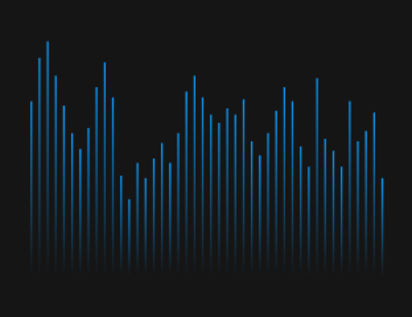Cash conversion ratio: What are they, and how do you calculate them?

The cash conversion ratio (CCR) gives an overall picture of a company's financial health. It points out possible issues and provides insights on improving cash flow.
Cash conversion metrics, such as cash conversion ratio and cash conversion cycle, assess how well a business manages its cash flow. They show how much and how quickly a company can turn its income into cash. However, it can be hard to understand how cash conversion works and how to calculate these ratios.
Continue reading to understand the cash conversion ratio and how companies can calculate and improve it.
What is cash conversion? Definition
Cash conversion refers to a company’s ability to convert profits to cash flow. If a company isn't careful, it's possible to have high sales and a profitable business on paper but still have cash flow problems that stall operations.
Cash flow management is essential for firms that sell products on credit. This is because they typically have to front the expenses before receiving any revenue, which can take weeks or even months.
For example, a company may struggle to pay its bills if customers don't clear their dues on time.
Main ideas in this article
Why cash conversion matters
Efficient cash conversion ensures a company has enough cash to cover expenses, pay suppliers, and meet other needs.
Here are some more reasons why cash conversion is important:
- It affects a company's liquidity — its ability to meet short-term financial obligations.
- Strong cash conversion gives financial flexibility to seize investment opportunities.
- It helps companies plan for unforeseen situations such as a recession.
Cash conversion ratio — meaning and applications
CCR, also known as cash conversion rate, is used to calculate a company's cash flow-to-net profit ratio. It compares a company's cash flow to its accounting profit.
A high CCR suggests the company has more cash flow than net profit.
Here are some applications of a cash conversion ratio:
- It measures the effectiveness of your business's everyday operations.
- It identifies operational issues, allowing companies to resolve them promptly.
Cash conversion ratio and operating working capital
Working capital is the money a business needs to keep its operations running. It is a liquidity indicator and shows how much money a company will have over the next 12 months.
On the other hand, the cash conversion ratio measures how much cash flow a business makes compared to its accounting profit.
However, both these metrics are closely connected. A high CCR indicates an efficient conversion of operational activity into cash, which can improve a company's ability to manage its operating working capital.
A low CCR, on the other hand, has a negative influence on operating working capital. For example, if a company has difficulty converting operational operations into cash, it might not be able to meet its short-term liabilities.
How do you calculate the cash conversion ratio? Formula
The cash conversion ratio can be calculated by dividing the business's cash flow from operations by its net profit. Here’s the cash conversion formula:
For example, the operating cash flow of XYZ Co. was $2 million, and the net profit was $2.2 million.
In this case, the CCR is 0.9.
What is a good cash conversion ratio?
The cash conversion ratio may either be positive or negative. If the ratio is equal to or higher than 1, the business can turn its profit into cash.
A ratio between 0 to 1 suggests that the company's profit conversion into cash is inefficient and needs to re-evaluate its operations.
Whereas anything below 0—a negative ratio—implies the company is incurring losses.
Companies should usually aim for a cash conversion ratio of 1–1.5, indicating they have sufficient funds to invest in growth opportunities. Anything more than this will mean it is not using its resources effectively.
What is a free cash flow conversion?
Free cash flow (FCF), like operating costs, is what is left over after your business pays its outflows. After accounting for financial expenses, the cash generated by a company helps continue operations and maintain liquid assets.
FCF conversion is a liquidity ratio that assesses a company's capacity to turn operational profits into FCF over a specific period. It considers changes in working capital from the balance sheet and spending on assets from the income statement.
How to calculate the FCF conversion using the cash conversion ratio?
To calculate free cash flow conversion, you need to determine:
- Free cash flow
- Earnings before interest, taxes, depreciation, and amortization (EBITDA)
You can use the following formula to calculate free cash flow:
Once you have determined your business’s FCF and EBITDA, you can calculate the free cash flow conversion by simply dividing the two.
Identifying areas of improvement
Analyzing the cash conversion cycle, keeping track of bottlenecks, and benchmarking against industry standards are ways to identify areas for improving cash conversion. We’ve discussed these ways in the following sections.
Analyze the cash conversion cycle
The cash conversion cycle determines how quickly a company can convert cash invested in inventory into cash flows during a specific period. A higher inventory turnover reduces the cash conversion cycle, which benefits the company's overall efficiency.
To calculate CCC, you would need to know the following:
- Average inventory
- Cost of goods sold (COGS)
- Accounts receivable balance
- Closing accounts payable
Or, you could use the cash conversion cycle formula:
Where,
- DIO is Days Inventory Outstanding
- DSO is Days Sales Outstanding
- DPO is Days Payable Outstanding
What is CCC? What does CCC mean?
The cash conversion cycle helps companies measure how long their funds will be tied up in inventory, making it unavailable.
CCC takes into account factors such as:
- How long the company needs to sell its inventory
- How long it takes to convey its cash outflows into cash inflows
- How long it takes to collect accounts receivables (A/R)
- How much time does it have to clear its accounts payables
Higher cash conversion cycles, for example, can result from selling products on more extended credit periods than 60–90 days.
What does a negative cash conversion cycle mean?
A negative cash conversion cycle indicates that goods are sold before the company has to pay for them.
In other words, a negative cash conversion cycle signifies that the company is in an excellent financial position and can swiftly turn its inventory and receivables into cash.
Pinpointing bottlenecks and challenges
Examining specific areas that might affect the conversion of investments into cash helps companies optimize their cash flow management.
For instance, scrutinize accounts receivable collection timelines — customer cash delays can restrict available funds.
Benchmarking against industry standards
Benchmarking helps identify whether your cash conversion cycle aligns with industry norms or if there are areas where improvements can be made to match or surpass competitors.
Moreover, by evaluating your business’s performance against competitors, you can identify loopholes and act accordingly.
Enhancing cash conversion with Agicap
Mature companies typically have a greater CCR since they generate considerably higher profits and accumulate huge cash. In contrast, start-ups usually have poor or even negative cash flows because of heavy capital investments.
Companies can increase their cash conversion ratio by streamlining their operations and leveraging automation using cash management software such as Agicap. It is a liquidity management solution that automates your cash flow statement process and helps reduce working capital requirements.
In terms of cash conversion, it can automate your workflow, which reduces errors and processing times, leading to faster cash conversion and improved business performance.






